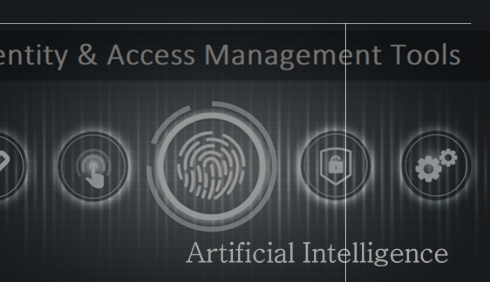"AI and Cloud Synergy for Intelligent Identity and Access Management"
 Ravi Kumar Vankayalpati
Ravi Kumar Vankayalpati
Introduction
As organizations embrace digital transformation, the need for robust security mechanisms has become paramount. Identity and Access Management (IAM) is at the core of securing enterprise systems, ensuring that only authorized users can access critical resources. Traditional IAM methods, while effective, struggle to handle the complexities of modern cloud environments. The synergy of Artificial Intelligence (AI) and cloud computing is revolutionizing IAM by enhancing authentication, automating identity verification, and proactively detecting security threats. This article explores how AI and cloud technology together are reshaping identity and access management, making it more intelligent, efficient, and secure.
Understanding IAM in the Cloud Era
IAM refers to the policies, processes, and technologies that manage digital identities and regulate access to sensitive data and applications. In a cloud-centric world, IAM needs to address:
User Authentication and Authorization – Ensuring that only legitimate users gain access to resources.
Single Sign-On (SSO) and Multi-Factor Authentication (MFA) – Simplifying access while enhancing security.
Role-Based and Attribute-Based Access Control (RBAC & ABAC) – Granting permissions based on roles, attributes, and risk factors.
Identity Governance – Monitoring and managing user access rights across cloud applications.
Threat Detection and Response – Identifying and mitigating unauthorized access attempts in real-time.
The Role of AI in IAM
AI enhances IAM by leveraging machine learning (ML), natural language processing (NLP), and predictive analytics to improve security and efficiency. AI-driven IAM solutions offer the following benefits:

1. Intelligent User Authentication
Traditional IAM systems rely on static credentials, which are susceptible to breaches. AI introduces adaptive authentication, which dynamically adjusts security measures based on real-time risk assessments. This includes:
Behavioral Biometrics – AI analyzes keystrokes, mouse movements, and other biometric patterns to verify identity.
Context-Aware Authentication – AI evaluates login context (location, device, network) to detect anomalies.
Passwordless Authentication – AI-driven facial recognition, fingerprint scanning, and voice recognition enhance security.
2. Anomaly Detection and Fraud Prevention
AI-powered anomaly detection in IAM can identify suspicious activities such as:
Unusual login attempts from different geolocations within short timeframes.
Access patterns that deviate from a user’s historical behavior.
Repeated failed login attempts, indicating credential stuffing or brute force attacks.
Using AI, IAM systems can flag high-risk activities and trigger additional authentication steps or block access automatically.

3. Automated Identity Verification and Onboarding
Manual identity verification is time-consuming and prone to errors. AI-driven IAM simplifies onboarding and verification by:
Scanning and validating government-issued IDs using computer vision.
Comparing live facial images with stored biometric data.
Automating user provisioning and de-provisioning based on role changes.
4. Risk-Based Access Control (RBAC & ABAC Enhancements)
AI refines access control by analyzing risk levels and dynamically adjusting permissions. For example:
A user logging in from a trusted device at a known location may receive seamless access.
If the same user attempts access from an unrecognized device, AI may enforce multi-factor authentication.
AI-based ABAC adapts permissions based on real-time attributes like job function, department, and recent activity.
5. AI-Powered Identity Governance
Managing user identities across multiple cloud platforms can be overwhelming. AI-driven IAM solutions:
Continuously audit access privileges to ensure compliance.
Detect orphaned accounts (inactive or unauthorized accounts with access rights).
Recommend least-privilege access to minimize security risks.
Cloud’s Contribution to IAM Security
Cloud computing enhances IAM by providing scalability, flexibility, and automation. Cloud-based IAM solutions offer:
Centralized Identity Management – Unified IAM platforms manage access across multiple cloud services.
Scalability – Cloud IAM can handle millions of users and devices without performance degradation.
Seamless Integration – Cloud IAM integrates with enterprise applications, third-party services, and APIs.
Automated Compliance Management – Built-in regulatory compliance features help organizations adhere to data protection laws like GDPR and CCPA.

AI and Cloud Synergy: A Perfect Match for IAM
AI and cloud computing together create a next-generation IAM framework that is proactive, intelligent, and resilient. Some key innovations include:
Self-Learning IAM Systems – AI-driven IAM platforms learn from user behavior, adapting security policies dynamically.
Real-Time Threat Intelligence – AI correlates security events across cloud environments to detect coordinated attacks.
AI-Powered User Behavior Analytics (UBA) – Cloud-based AI systems analyze massive datasets to differentiate between normal and suspicious activities.
Intelligent Access Orchestration – AI automates access requests, approvals, and revocations based on contextual data.
Challenges and Considerations
Despite the benefits, AI-powered cloud IAM faces challenges, including:
Privacy and Ethical Concerns – AI’s access to vast amounts of personal data raises privacy issues.
False Positives and Bias in AI Models – Inaccurate AI predictions can lead to unnecessary access restrictions.
Integration Complexities – Organizations may struggle to integrate AI-based IAM with legacy systems.
Threats to AI-Driven IAM – Adversarial attacks can manipulate AI models to bypass security controls.
Future of AI and Cloud in IAM
As technology advances, IAM will continue to evolve with:
Decentralized Identity Management – Blockchain and AI will enable self-sovereign identities, reducing reliance on central authorities.
Zero Trust Security Models – AI will enforce continuous verification rather than relying on predefined trust assumptions.
AI-Driven Automated Security Policies – Policies will adjust in real-time based on evolving threats.
Edge AI in IAM – AI deployed at the network edge will provide faster authentication and localized security enforcement.

Conclusion
The synergy of AI and cloud computing is revolutionizing Identity and Access Management by making it more intelligent, adaptive, and secure. AI enhances authentication, detects anomalies, automates governance, and refines access control, while the cloud provides the necessary scalability and integration capabilities. As organizations continue to migrate to cloud-based environments, adopting AI-driven IAM solutions will be crucial to mitigating security risks and ensuring seamless access management. The future of IAM lies in continuous innovation, where AI and cloud technology work together to build a more resilient cybersecurity framework.
Subscribe to my newsletter
Read articles from Ravi Kumar Vankayalpati directly inside your inbox. Subscribe to the newsletter, and don't miss out.
Written by
